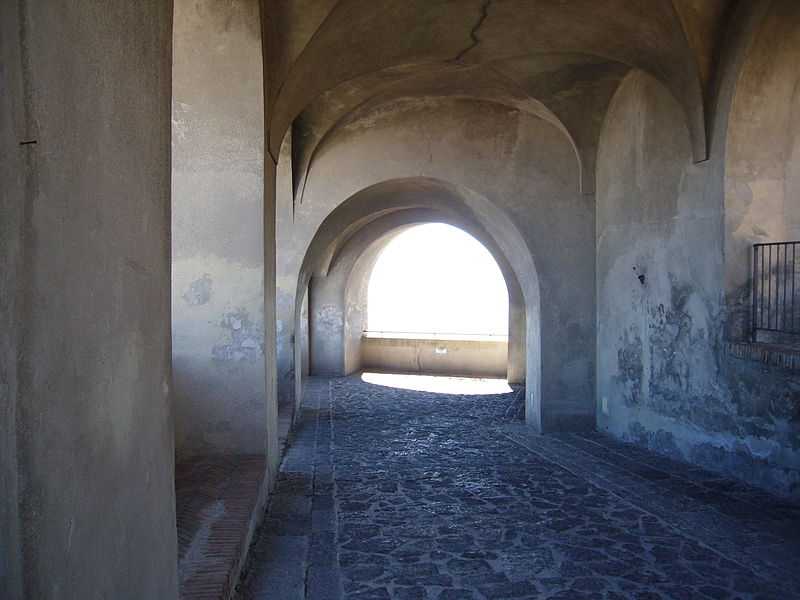Castel Sant’Elmo, once called Paturcium, is a Medieval castlewhich dominates the city of Naples from the highest point of the Vomero hill. It is located in the place where a church dedicated to St. Erasmus was built in the 10th century, hence the name Ermo and then Elmo. Inside the castle there is also a permanent museum, the 'Napoli Novecento'.
Castel Sant’Elmo, once called Paturcium, is a Medieval castle which dominates the city of Naples from the highest point of the Vomero hill.
It is located in the place where a church dedicated to St. Erasmus was built in the 10th century, hence the name Ermo and then Elmo. Inside the castle there is also a permanent museum, the 'Napoli Novecento'.
The Castle has always been coveted due to its strategic position from which you can control the whole city, the gulf and the streets and from which you can enjoy the view of a splendid panorama of the historic center. To access to the interior of the Castle, you need to take a steep ramp and cross a bridge protected by side walls in which 12 slits open on each side; after the bridge there is the Grotta dell'Eremita.
The imperial emblem of Charles V is affixed to the portal in piperno, consisting of a double-headed eagle and a marble inscription reminiscent of his reign.
On Piazza d'Armi stands the Torre del Castellano.
The origins of the Castle can be traced back to a Norman observation tower called Belforte, but the first certain historical information relating to it dates back to 1329, when the Angevin dynasty wanted to give the city a new defense tool. It was in fact Roberto d'Angiò who commissioned the architect Tino da Camaino in 1325 to build the Palatium Castrum, whose work ended under the reign of Giovanna I d'Angiò in 1343.
The Castle, with its large gunboats placed on the ramparts and the high walls surrounded by a deep moat, was a structure that perfectly fit to the strategic-defensive tasks. For this reason, since then, it was a military objective, especially during the dispute between the Spanish and French for the conquest of the Kingdom of Naples.
Castel Sant'Elmo was was rebuilt on commission from the Spanish Viceroy Don Pedro De Toledo between 1537 and 1547, and assumed the current six-pointed star plan, representing one of the most significant examples of 16th century military architecture.
In 1587 a lightning strike, hitting the ammunition depot, caused serious damage to the Castle, destroying the military houses and the internal Church.
The building was then rebuilt, around the 17th century, by the architect Domenico Fontana.
Between the 17th and 18th centuries, Castel Sant'Elmo also served as a prison, where, among the others, the philosopher Tommaso Campanella was imprisoned. The end of the 18th century was a period of great turbulence for the Castle which was the protagonist of many popular rebellions and aggressions; in fact during the riots that followed the Napoleonic Campaign in Italy, it was occupied by the people and besieged by the Republicans who proclaimed in the Piazza d'Armi the Neapolitan Republic. Following the collapse of the Republic, the Castle was once again a prison, in which Giustino Fortunato, Domenico Cirillo and Luisa Sanfelice were imprisoned, and remained a military prison until 1952.
Only in the late 20th century the Castle became a center of cultural interests and today houses the 'Napoli Novecento' museum and numerous exhibitions.

- Monday:
-
08:30 - 18:30
- Tuesday:
-
08:30 - 18:30
- Wednesday:
-
08:30 - 18:30
- Thursday:
-
08:30 - 18:30
- Friday:
-
08:30 - 18:30
- Saturday:
-
08:30 - 18:30
- Sunday:
-
08:30 - 18:30







